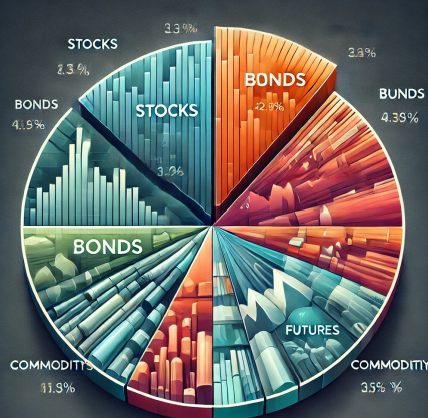How to Use Futures and Commodities for Portfolio Diversification
In an era of market volatility and economic uncertainty, diversification remains the cornerstone of resilient investing. While stocks and bonds dominate traditional portfolios, savvy investors are increasingly turning to futures and commodities to hedge risks and enhance returns. These instruments offer unique advantages, from inflation protection to uncorrelated returns, but require strategic implementation. This guide explores how to effectively integrate futures and commodities into your portfolio, balancing opportunity with risk management.

1. Understanding Futures and Commodities: Definitions and Mechanisms
Futures contracts are standardized agreements to buy or sell an asset (like oil, gold, or indices) at a predetermined price and date. They’re traded on exchanges, enabling speculation or hedging against price swings. Commodities, on the other hand, are physical goods—such as crude oil, wheat, or copper—that serve as the underlying assets for futures.
Key Differences:
Futures: Derivative instruments with leverage (you control large positions with minimal capital).
Commodities: Tangible assets influenced by supply-demand dynamics, geopolitical events, and macroeconomic trends.
For example, a gold futures contract allows you to bet on gold’s price movement without owning physical bullion. Meanwhile, investing in commodities ETFs (e.g., SPDR Gold Shares) provides direct exposure.
2. Why Futures and Commodities Enhance Diversification
A. Low Correlation with Traditional Assets
Stocks and bonds often move in tandem during crises. Commodities, however, frequently zig when equities zag. During the 2008 financial crisis, while the S&P 500 fell 38%, gold surged 5.8%, and wheat futures rose 20%.
B. Inflation Hedge
Commodities like oil and precious metals historically outpace inflation. From 2020 to 2023, U.S. inflation averaged 6.5%, but crude oil prices jumped 60%, and copper gained 35%.
C. Leverage for Amplified Returns
Futures allow investors to control $100,000 of assets with just $5,000–$10,000 in margin. For instance, a 10% rise in soybeans futures could yield a 50% return on margin.

3. Risks and Mitigation Strategies
Key Risks:
Leverage Magnifies Losses: A 5% drop in a futures contract can wipe out 50% of your margin.
Volatility: Geopolitics (e.g., Ukraine war disrupting wheat exports) or weather events (hurricanes affecting oil rigs) cause abrupt price swings.
Contango: Rolling futures contracts in a rising price environment erodes returns.
Mitigation Tactics:
Diversify Across Commodity Types: Balance energy, metals, and agriculture.
Use Options on Futures: Limit downside risk with put options.
Allocate Conservatively: Limit commodities/futures to 5–15% of your portfolio.
4. Practical Steps to Incorporate Futures and Commodities
A. Choose Your Approach
Direct Futures Trading: Requires a brokerage account with futures permissions (e.g., Interactive Brokers). Start with micro contracts (e.g., Micro E-mini S&P 500).
Commodity ETFs/ETNs: Simplify exposure via funds like USO (oil) or GDX (gold miners).
Managed Futures Funds: Let professionals handle strategies (e.g., AQR Managed Futures Strategy).
B. Research and Monitor
Track macroeconomic indicators (CPI, Fed policies) and supply data (EIA oil inventories).
Use tools like TradingView for technical analysis.

5. Case Study: Diversification in Action
In 2022, a tech-heavy portfolio (down 30%) could have offset losses with:
- Gold Futures: Up 12% amid rate hikes.
- Natural Gas Futures: Soared 140% due to Europe’s energy crisis.
Allocating 10% to these assets would have reduced the portfolio’s decline to 22%.
Conclusion
Futures and commodities are powerful tools for diversification, offering inflation protection, leverage, and reduced correlation to traditional assets. However, their complexity and volatility demand disciplined risk management. By starting small, diversifying across sectors, and staying informed, investors can harness these instruments to build more resilient portfolios. Consult a financial advisor to tailor strategies to your risk tolerance and goals—because in today’s markets, diversification isn’t just optional; it’s essential.
(Writer:Seli)





